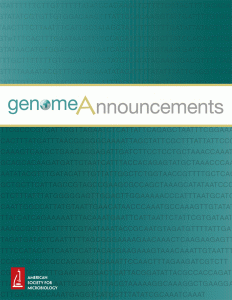The author of an article mapping the genome of an infectious bacterium is pulling the paper because — well, it wasn’t the bacterium she thought it was.
Study author Celia Abolnik is retracting her paper in Genome Announcements because it didn’t actually map out the DNA of Mycoplasma meleagridis, a bacterium that typically infects turkeys but has recently been found in chickens.
The trouble was, the sequence for Mycoplasma meleagridis in the National Institute of Health’s DNA database, Genbank, was actually a different variety of bacteria — Mycoplasma gallinaceum, another scourge of poultry.
Here’s the notice for “Complete Genome Sequence of Mycoplasma meleagridis, a Possible Emerging Pathogen in Chickens:”
Volume 3, no. 3, e00380-15, 2015. The author hereby retracts this article.
The author was alerted that an American Type Culture Collection (ATCC) strain sequence for Mycoplasma meleagridis had recently been released. Phylogenetic analyses of the 16S rRNA gene and intergenic spacer region (IGSR) of all avian Mycoplasma spp., including the ATCC Mycoplasma meleagridis strain and strain B2096 8B, were conducted, and subsequently it was discovered that the latter is Mycoplasma gallinaceum and not Mycoplasma meleagridis as reported.
The author assumes all responsibility for this error and apologizes for any inconvenience caused to the readers of Genome Announcements. B2096 8B represents the first full genome sequence of Mycoplasma gallinaceum, and a revised manuscript is in preparation.
Abolnik, an associate professor at the University of Pretoria, South Africa, confirmed the identification issue and said that she requested the retraction shortly after learning of the error.
Very simply, there were incorrect sequences for M.meleagridis in Genbank at the time I was trying to identify the new genome using sequence homology, hence the mis-indentification. I was alerted to the error in identification within days of the manuscript appearing in press, and started the withdrawal process almost immediately.
As Abolnik noted, the process happened quickly — the paper was published in May, 2015, and retracted less than one month later.
We’ve contacted the journal and will update if they respond.
Hat tip: Rolf Degen
Like Retraction Watch? Consider supporting our growth. You can also follow us on Twitter, like us on Facebook, add us to your RSS reader, and sign up on our homepage for an email every time there’s a new post. Click here to review our Comments Policy.
